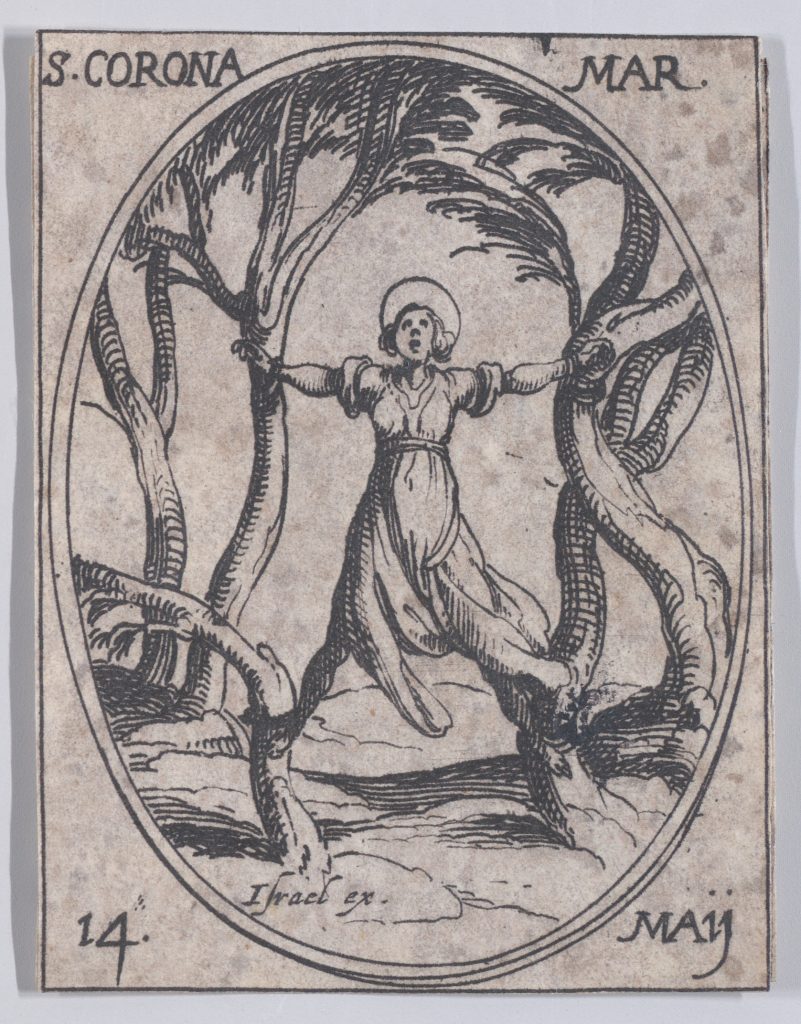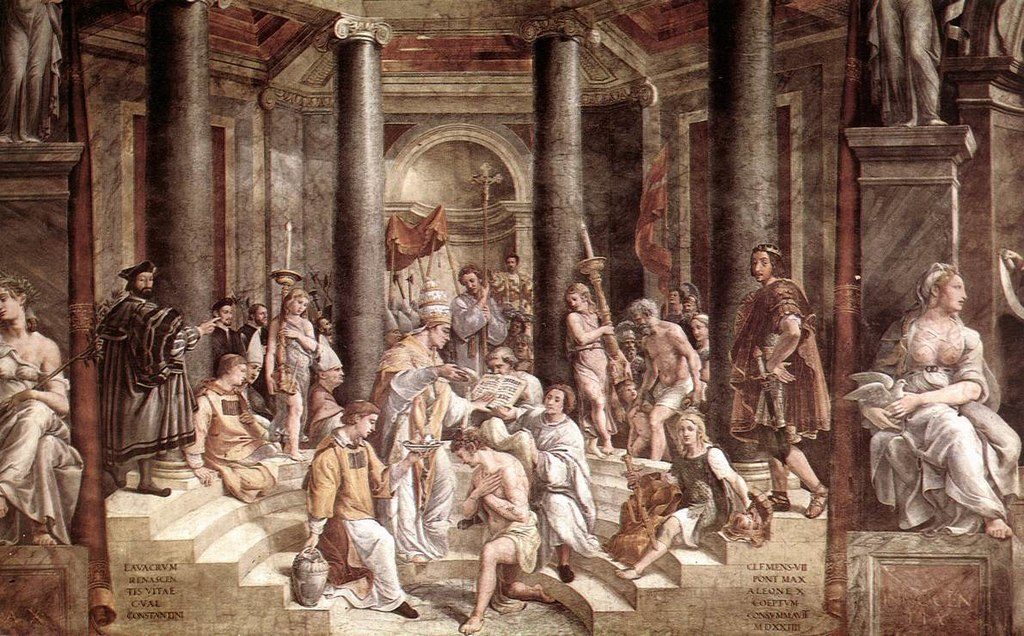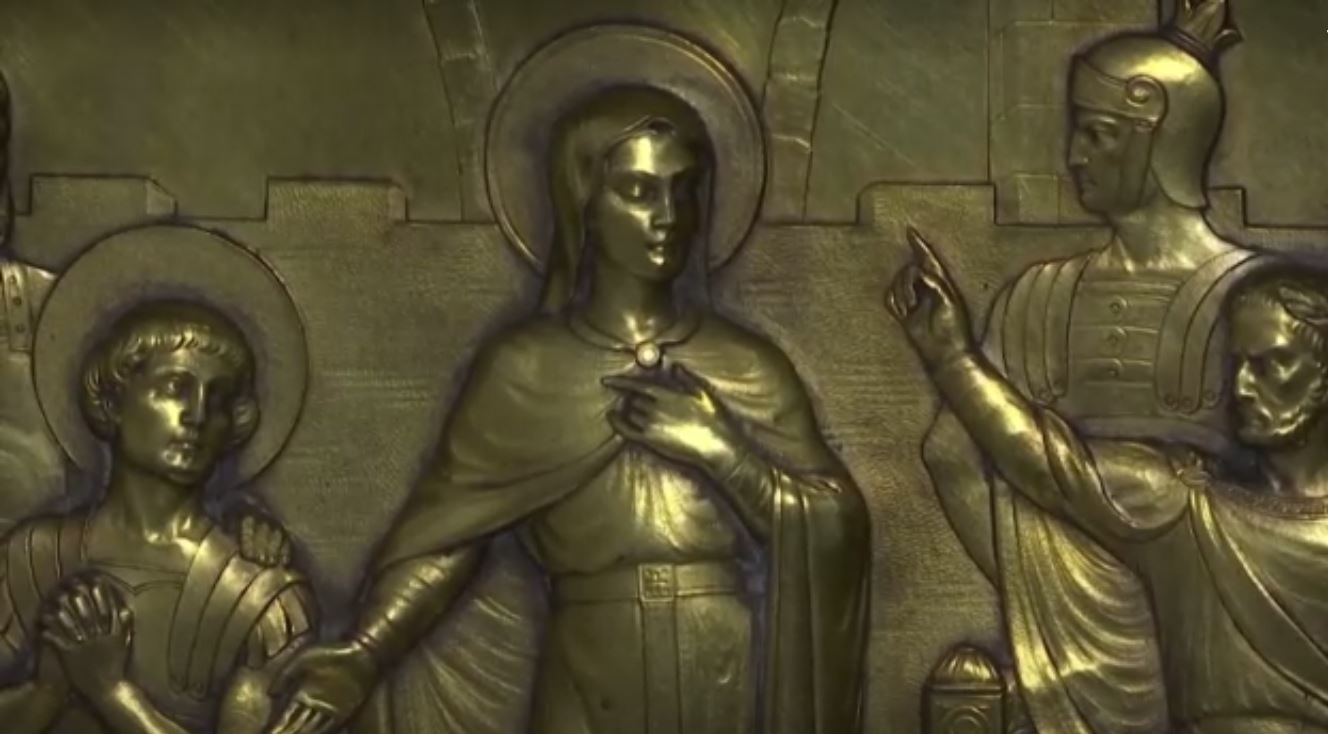Written by Edward Whelan, Contributing Writer, Classical Wisdom
The COVID 19 or coronavirus pandemic overturned all aspects of our daily life and many have sought comfort in religion. A nearly forgotten Christian saint has suddenly become popular again. This is St. Corona, and once again her story is inspiring many and giving hope to the faithful. Though the pandemic is not named after her, it has thrown the spotlight back on this forgotten saint.
Christian Saints in the Roman Empire
Christianity became slowly popular in Rome and throughout the provinces in the first century AD. It was widely suspected that it was an evil cult and that its teachings were opposed to Roman values and traditional religion. Many Christians were forced to practice their faith in secret.
The first Christian martyr was St Stephen. There were often persecutions of the followers of Jesus throughout the 1st, 2nd, and 3rd century AD. One of the best known of these was the persecution of the early Christians by Nero, who had them killed in the Coliseum.

Christian Dirce by Henryk Siemiradzki (National Museum, Warsaw) shows the punishment of a Roman woman who had converted to Christianity. At the Emperor Nero’s wish, the woman, like mythological Dirce, was tied to a wild bull and dragged around the arena.
Many of the followers of Jesus were cruelly killed in horrific ways throughout the Empire until Constantine granted the Church toleration in the early 4th century AD.
The Story of St. Corona
Little is known for certain about St Corona. It appears that she lived in the 2nd or 3rd century AD, somewhere in the Roman Empire. She may have been born in Italy, France, Spain, or Syria. The only thing that we know for certain is that monks began to venerate her during the 6th and 7th century.
It is not known why this happened. However, saints were important in converting the many pagans in Europe even as late as the 7th century AD. It seems likely that the saint was used to deepen the faith of believers and to encourage the still half-pagan rural folk to become fully Christianized. There are many stories about her but most of them are only fables, written to encourage people to be more devout.
Corona likely came from a good family and married young. It is claimed that she married the future St. Victor, a soldier who had been converted or an unidentified soldier. Other accounts claim that she was never married. It appears that she was converted at an early age to Christianity, possibly by a servant, which was common at the time.

St Corona by the Master of the Palazzo Venezia Madonna in the National Gallery of Denmark.
The Martyrdom of St. Corona
There is scholarly agreement that St Corona was martyred. However, according to some sources, she was martyred in the 2nd century and in others, the 3rd century AD. It is generally agreed that her death was in some way related to that of St. Victor. By converting to Christianity, he had committed a crime akin to treason. He was sentenced to hideous tortures and eventually beheaded.
St. Corona was present at the execution and she was so moved by the suffering of Victor that she ran to comfort him. This was against the law and she was arrested. St Corona then defiantly admitted that she was a Christian and was swiftly sentenced to death.
Her end was gruesome and, according to the sources, she was tied to two palm trees that had been tied to the ground. The two trees were then untied, and they snapped back into their original standing position. This tore the young woman’s body in two.
Later she came to be regarded as a saint by the Catholic and Greek Orthodox Churches.

Ste. Couronne, martyre (St. Corona, Martyr), Jacques Callot (Nancy, France 1592–1635). Courtesy of The MET.
The Cult of St. Corona
Corona became immensely popular in the early Middle Ages, especially in the German territories. There are many churches and religious houses dedicated to her memory in Bavaria and Austria. There is even a town named after the saint in Austria— Sankt Corona am Wechsel.
There are a number of relics associated with the saint. These were highly prized, and the German Emperor took some to Aachen in the 10th century. Her remains are now in a shrine in the Aachen Cathedral. There is growing interest in Corona, and many, because she has the same name as the virus, believe that she can protect them.
The Saint of Treasure Hunters
The name Corona means ‘crown’ in Latin, the language of the Roman Empire and later the Christian Church. The young martyr was called Corona because she has worn the crown of martyrdom and had been granted eternal salvation.
Later, people came to believe that she could help them secure wealth and treasures. This was because coins were often known as ‘crowns’. They assumed that St. Corona was somehow related to wealth and money. As a result, she is often held to be the patron saint of treasure hunters.

Raphael’s The Baptism of Constantine.
Many people have prayed to her during economic crises. During the Great Recession of 2008-2009, many believers prayed to her for help. Today, as the world struggles with the economic consequences of the virus, many more people could do with the saint’s help.
Conclusion
St. Corona is a mysterious figure. However, she is proof of the continuing power of saints and martyrs from the Roman Empire. It also shows us that, even in these more secular times, people seek solace from religion during a crisis.










One comment
It’s funny that the best christians were those before Christianism became dominant; and, the pagans sometimes made one to think of modern muslims and their beheadings and cruel ways of persecution…
Both christianism and islamism became corrupted over the years as they became more powerful…
Both became religions that practically forces everyone to convert to them in the areas of the world where they became dominant…
Both are the worst persecuting systems that one can find anywhere in the world…
Islam had its golden age and hospitals became a common sight in christian communities; but, they are full of pretences and mental oppressions.
These systems cannot evolve because their scriptures, as it is now, cannot be changed…
Everybody in the West have the tension between a modern mindset and a primitive christianism in them…
Christianism has become a shallow pretence where one must believe in things that one knows are not so…
Our apologies, you must be logged in to post a comment.